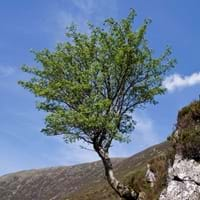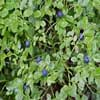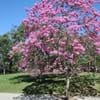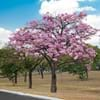Life Span
Perennial
Perennial
Type
Tree
Fruit, Palm or Cycad, Tree
Origin
Asia, Europe, Northern Africa
Not Available
Types
Sorbus aucuparia fenenkiana, Sorbus aucuparia glabrata, Sorbus aucuparia praemorsa
Not Available
Number of Varieties
Not Available
Habitat
Temperate Regions
Humid climates, sandy seeps, shores, tropical environments
USDA Hardiness Zone
3-7
5-12
Sunset Zone
A1, A2, A3, 1a, 1b, 2a, 2b, 3a, 3b, 4, 5, 6, 7, 8, 9, 10, 14, 15, 16, 17
H2
Habit
Oval or Rounded
Upright/Erect
Flower Color
White
Yellow Brown
Flower Color Modifier
Bicolor
Bicolor
Fruit Color
Orange, Yellow
Green
Leaf Color in Spring
Green
Green
Leaf Color in Summer
Green
Golden Green
Leaf Color in Fall
Dark Green
Green
Leaf Color in Winter
Dark Green
Green
Leaf Shape
Pinnate
Pinnate
Plant Season
Spring, Fall
All year
Sunlight
Full Sun, Partial Sun
Full Sun, Part sun
Type of Soil
Clay, Loam, Sand
Loam, Sand
The pH of Soil
Acidic, Neutral
Neutral, Slightly Acidic, Slightly Alkaline
Soil Drainage
Average
Well drained
Bloom Time
Late Spring
Not Available
Tolerances
Not Available
Salt
Where to Plant?
Ground
Ground
How to Plant?
Budding, Grafting, Stem Cutting
Seedlings, Transplanting
Plant Maintenance
Medium
Medium
Watering Requirements
Do Not over Water, Water in the early morning hours
Reduce watering during fall, Water daily during growing season, Water frequently while growing
In Summer
Lots of watering
Lots of watering
In Spring
Moderate
Moderate
In Winter
Average Water
Average Water
Soil pH
Acidic, Neutral
Neutral, Slightly Acidic, Slightly Alkaline
Soil Type
Clay, Loam, Sand
Loam, Sand
Soil Drainage Capacity
Average
Well drained
Sun Exposure
Full Sun, Partial Sun
Full Sun, Part sun
Pruning
Remove dead or diseased plant parts, Trim each shoot back to the first set of leaves
Cut limbs, Remove dead branches
Fertilizers
All-Purpose Liquid Fertilizer, Doesn't require fertilization when grown in rich soil
Nitrogen, Phosphorous, Potassium, slow-release fertilizers
Pests and Diseases
Aphids, blister mites, Canker, fireblight, sawflies, Silver leaf
Bud rot, Cadang-cadang, Coconut bug, Coconut foliar decay, Coconut scale, Ganoderma butt rot, Gray leaf blight, Lethal bole rot, Lethal yellowing, Mealybugs, nutfall, Red ring nematode, Stem bleeding disease
Plant Tolerance
Not Available
Salt
Flower Petal Number
Single
Single
Foliage Texture
Fine
Fine
Foliage Sheen
Matte
Matte
Attracts
Birds
Not Available
Allergy
Anxiety, Depression, High blood cholestrol, High blood pressure, Pain, Stress
Abdominal pain, Anaphylaxis, cramps, Mouth itching, Nasal Congestion, Nausea, Runny nose, Skin irritation, Throat itching
Aesthetic Uses
along a porch, deck or patio, Showy Purposes
Beautification, Landscape Designing, Showy Purposes
Beauty Benefits
Not Available
Good for skin, Good for the Scalp, Hair Conditioner, Heals Damaged Hair, Makes Hair Silkier, Making cosmetics, Removes dandruff, Restores Hair Colour
Environmental Uses
Air purification, Food for birds, Shadow Tree
Air purification, No fertilizer, pesticides, or herbicides needed, Wildlife
Medicinal Uses
Diarrhea, Inflammation, Laxative, Urinary tract problems, Vitamin C
Antibacterial, anti-cancer, Antifungal, Antioxidants, Antiviral, Digestion problems, Heart problems, Immunity, Skin Disorders, Weight loss
Part of Plant Used
Bark, Fruits, Wood
Whole plant
Other Uses
Used for its medicinal properties, Used for woodware
Air freshner, Animal Feed, Application in Furniture, Application in Handicrafts, For making oil for cosmetics, Oil is used for aromatherapy, Traditional medicine, Used as a nutritious food item, Used as a vegetable oil
Used As Indoor Plant
No
No
Used As Outdoor Plant
Yes
Yes
Garden Design
Feature Plant, Mixed Border, Topiary / Bonsai / Espalier
Edible, Feature Plant, Fruit Tree, Landscape, Tropical
Botanical Name
Sorbus aucuparia
Cocos nucifera
Common Name
Rowan, Mountain ash
Coconut Palm, coconut tree
In Hindi
रोवाण पौधा
नारियल का पेड़
In German
Rowan Tree
Kokospalme
In French
Rowan Tree
Cocotier
In Spanish
Rowan Tree
El cocotero
In Greek
Rowan Tree
καρύδας δέντρο
In Portuguese
Árvore de Rowan
Coqueiro
In Polish
Rowan Tree
Drzewo kokosowe
In Latin
Rowan ligno
dolor ligno
Phylum
Magnoliophyta
Magnoliophyta
Class
Magnoliopsida
Liliopsida
Family
Rosaceae
Aceraceae
Clade
Angiosperms, Eudicots, Rosids
Angiosperms, Commelinids, Monocots
Tribe
Not Available
Cocoeae
Subfamily
Not Available
Arecoideae
Number of Species
Not Available
Not Available
Season and Care of Rowan Tree and Coconut Tree
Season and care of Rowan Tree and Coconut Tree is important to know. While considering everything about Rowan Tree and Coconut Tree Care, growing season is an essential factor. Rowan Tree season is Spring and Fall and Coconut Tree season is Spring and Fall. The type of soil for Rowan Tree is Clay, Loam, Sand and for Coconut Tree is Loam, Sand while the PH of soil for Rowan Tree is Acidic, Neutral and for Coconut Tree is Neutral, Slightly Acidic, Slightly Alkaline.
Rowan Tree and Coconut Tree Physical Information
Rowan Tree and Coconut Tree physical information is very important for comparison. Rowan Tree height is 1,000.00 cm and width 800.00 cm whereas Coconut Tree height is 2,900.00 cm and width 700.00 cm. The color specification of Rowan Tree and Coconut Tree are as follows:
Rowan Tree flower color: White
Rowan Tree leaf color: Green
Coconut Tree flower color: Yellow Brown
- Coconut Tree leaf color: Green
Care of Rowan Tree and Coconut Tree
Care of Rowan Tree and Coconut Tree include pruning, fertilizers, watering etc. Rowan Tree pruning is done Remove dead or diseased plant parts and Trim each shoot back to the first set of leaves and Coconut Tree pruning is done Cut limbs and Remove dead branches. In summer Rowan Tree needs Lots of watering and in winter, it needs Average Water. Whereas, in summer Coconut Tree needs Lots of watering and in winter, it needs Average Water.





